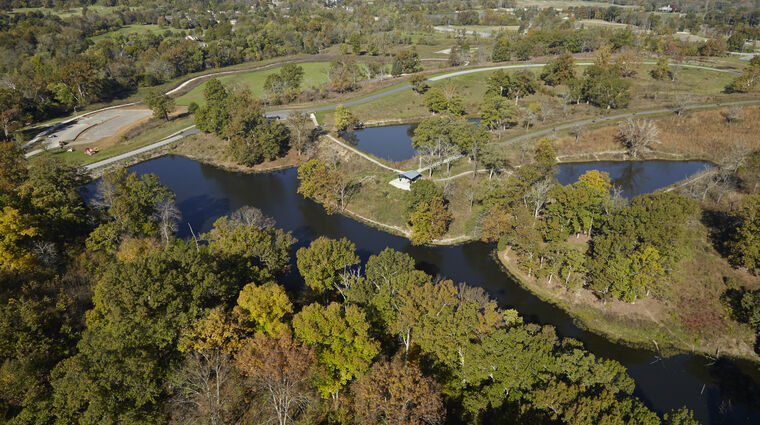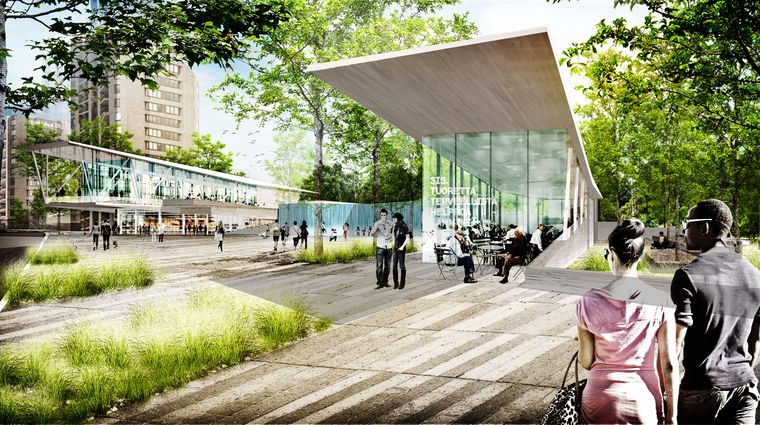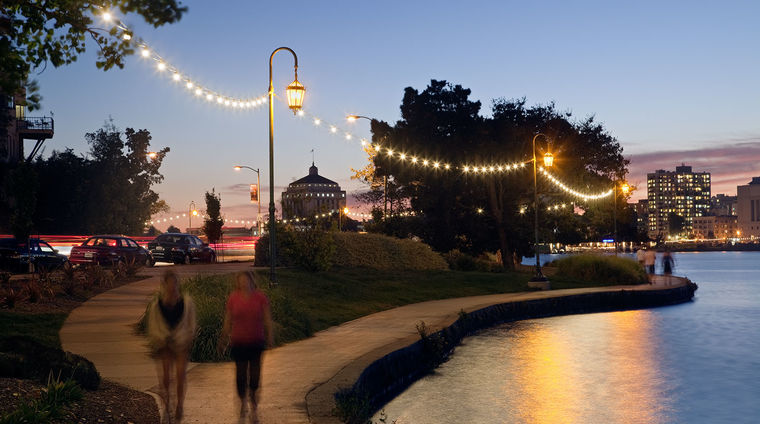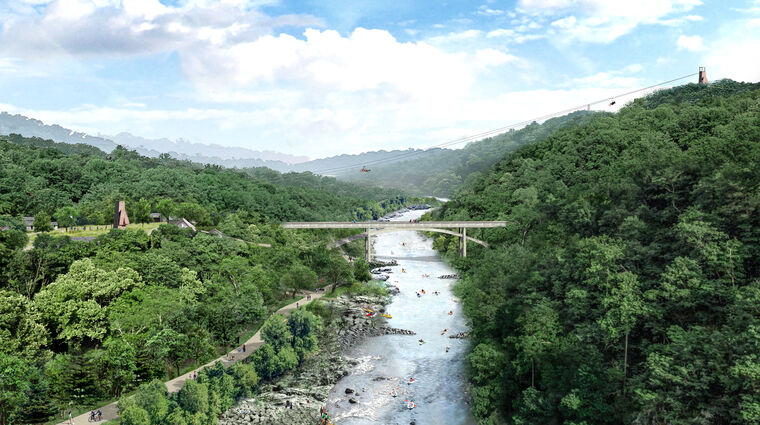Continental Pedestrian Bridge
landscape architecture, public realm, revitalizationThe Continental Pedestrian Bridge represents an initial installment of the WRT-designed, 2,100-acre park at the center of the Trinity River Corridor Project, the largest public work in the history of Dallas. Rendered obsolete by the construction of an adjacent vehicular bridge (designed by Santiago Calatrava), the historic Continental Bridge was re-envisioned as a pedestrian promenade linking the city’s downtown with West Dallas, a largely Hispanic and historically disenfranchised community.
The promenade features seating, plantings, shade structures, play and water features, chess tables, bocce courts and flexible areas for concerts and gathering—all set within a 2,000-foot long, 50’-foot wide span. A major challenge of the design focused on the age of the bridge, which dates to the 1930s, and its limited capacity for loading (125 lbs/sf for both live and dead loads). In response, the design employed a thin layer of new paving, sheets of weathering steel to contain shallow-rooted meadow plantings, light-weight shade structures in lieu of shade trees, and a misting fountain that does not require a water holding tank.



A second challenge was cultivating the experience along the bridge's length--more than a third-of-a-mile—into an attractive place for walking and strolling. This was resolved by shifting new amenities from side to side, creating a meandering path of non-directional panels of color.
A painted labyrinth marks the center of the bridge, which is also the locus of a future zip line linking the bridge deck with the park below. Cyclists are accommodated on the bridge through an end-to-end 16’ wide shared mobility lane. This clearance also serves as a service and emergency route.





WRT also helped coordinate access to the bridge from surrounding streets and adjoining development in an effort to establish a seamless, recreation-oriented circulation system around the core area of Trinity Lakes Park.
The design included parking, pathways, shade trees, and flexible spaces for markets, fairs, and service in support of bridge activities.
The $10 million project was entirely donor funded, and coordination with the State Historic Preservation Office was exercised to ensure compliance of the bridge design with state historic preservation guidelines.

Related Projects
We believe parks and open spaces should improve quality of life, foster economic development, and protect the environment.





